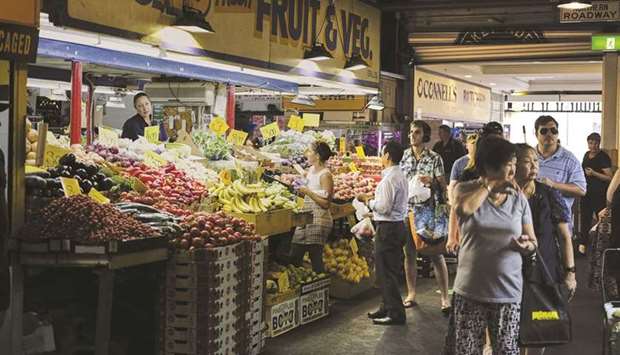Australia’s three-year bond yield climbed to the highest level since July 2019 after consumer inflation picked up pace in the September quarter, strengthening rate-hike bets.
Yields rose as much as 24 basis points to 1.01% after trimmed mean inflation for the third quarter – a measure which feeds into the Reserve Bank of Australia’s policy – rose 2.1% to beat economist estimates. The April 2024 bond yield rose to the highest relative to the RBA target since it began a yield curve control programme last year.
The bond selloff mirrors that of New Zealand last week, which had recorded its fastest pace of inflation in a decade as traders bet that consumer cost pressures are getting entrenched. The same debate is getting echoed in major markets, with yields from Treasuries to gilts all gaining on expectations that central banks may have to turn hawkish quicker than forecast.
“Inflation has begun its ascent earlier than many central bank officials expected and current price pressures suggest they are unlikely to be transitory,” said Prashant Newhana, a senior rates strategist at TD Securities in Singapore. “For markets, the question is whether this sell-off in rates is done? We don’t think so.”
Swap traders have priced in three hikes by the RBA by end-2022, to take the cash rate up to 0.75%, based on OIS futures. That’s in contrast with RBA’s stance, with Governor Philip Lowe saying that he doesn’t see conditions for a rate rise emerging before 2024.
Australia’s bond yields have been on the rise since late September, tracking Treasuries, after Federal Reserve Chair Jerome Powell said the US central bank could start scaling back its bond purchases as soon as November.
The upward pressure on Aussie yields has also come from expectations of a growth rebound, after the nation’s state governments announced the end to long-standing lockdowns in the nation’s two largest cities.
The federal government has committed to reopen the country to international travellers.
The surge in yields had forced the RBA back to defend its 0.1% bond-yield target Friday, for the first time in eight months, raising doubts on potential central bank tightening.
“The markets will be closely watching whether the RBA comes in to defend the 10 basis point target yield on the April 2024 bond,” said Newhana. “If not, markets will begin second guessing whether the RBA could announce a shift in its target bond as early as next week’s RBA meeting.”

Shoppers inside the Adelaide Central Market. Australia’s three-year bond yield climbed to the highest level since July 2019 after consumer inflation picked up pace in the September quarter, strengthening rate-hike bets.
